The Wenchuan Special Tourist Area is located in Wenchuan County, Aba Tibetan and Qiang Autonomous Prefecture, Sichuan Province. It is a commemorative and cultural theme scenic area specially developed after the reconstruction of the 2008 Wenchuan earthquake. It is a national 5A-level tourist attraction. The scenic area consists of Dreamlike Sanjiang, Heaven and Earth Yingxiu, and Shuimo Ancient Town, covering Sanjiang Township, Yingxiu Town and Shuimo Town in the southern part of Wenchuan. Here, the mountains and waters are beautiful, the biodiversity is rich, the historical and cultural heritage is profound, the ethnic culture is colorful, and the ecological and geological cultures are extensive and profound. The natural scenery, local customs, ethnic culture, human landscapes and rural customs complement each other, with unique charm. The area of the scenic spot is 100 hectares.
Historical Culture
Wenchuan is one of the four major Qiang-inhabited counties in China, and has long been known as "the hometown of Dayu, the home of pandas, and the land of Qiang embroidery". At 14:28:04 on May 12, 2008, an 8.0-magnitude earthquake on the Richter scale occurred about 11 kilometers south of Yingxiu Town, Wenchuan County, with a focal depth of 14 kilometers. The once beautiful and prosperous Yingxiu was almost reduced to rubble. After the disaster, it was reconstructed and specially developed into a commemorative and cultural theme scenic area to remember that period of history and show the miracle of post-disaster reconstruction and the spirit of perseverance. As early as the Shang Dynasty, Shuimo Ancient Town was known as the "Hometown of Longevity" and was called Laoren Village at that time. Later, it was renamed Shuimo and remains so to this day. It is an integration area of Han and ethnic minorities, where inland customs and Tibetan-Qiang cultures shine, and Western Sichuan humanities and Zen-Buddhist cultures bloom together.
It was rated as a national 5A-level tourist attraction in 2013.
Main Attractions
Water Town Tibetan Village
After the "5.12" Wenchuan earthquake, Sanjiang Township, with its unique natural water system as the core, built a water town Tibetan village with ethnic characteristics, including archways, water wheel landscapes, Mingyue Pavilion, Tibetan-style parks, shopping corridors, and tourist centers.
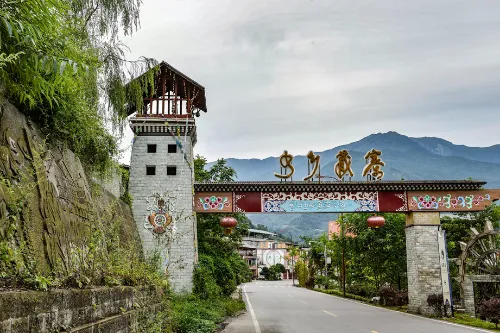
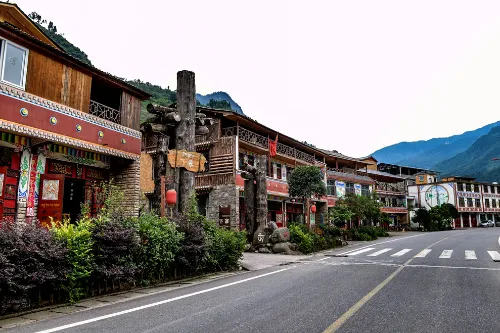
Chanshou Old Street
Chanshou Old Street is 1300 meters long, with a "U"-shaped layout in plan. The architectural styles of Chunfeng Pavilion, Daifu Mansion, Wannian Platform, Character Library, White Pagoda and other buildings distributed on both sides are the culmination of China's traditional architectural system. They are typical Qing Dynasty-style buildings combining Qiang, Tibetan and Han styles, with clear outlines, profound layouts, and clear multi-axis characteristics, reflecting the ancient people's "harmony between man and nature" architectural thought and design concept.

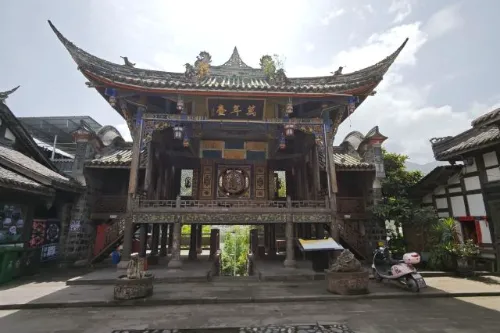
Xuankou Middle School Ruins
All the school buildings of Xuankou Middle School sank and collapsed in the "5.12" Wenchuan earthquake in 2008. The building was 5 floors before the earthquake. After the earthquake, only 3 floors remained of the 5-story building, the 3rd floor became the 1st floor, and the original 1st and 2nd floors turned into debris. It is the only relatively completely preserved large-scale ruin from the "5.12" Wenchuan earthquake and was the venue for the first anniversary memorial ceremony of the "5.12" Wenchuan earthquake in 2008.
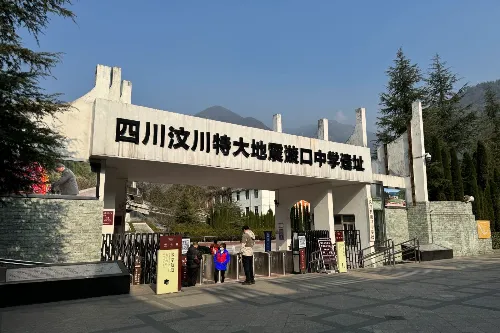
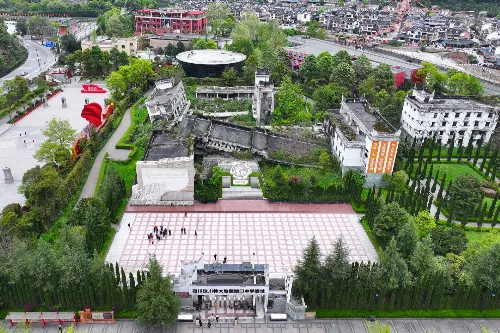
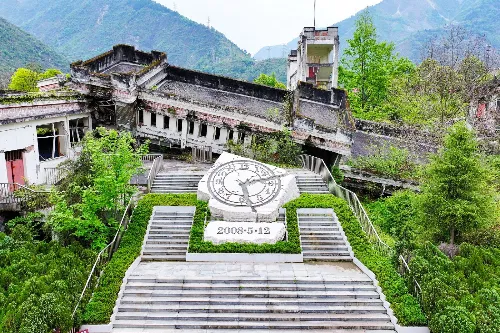
Baihua Bridge Ruins
Baihua Bridge is located at the junction of Xuankou Town and Yingxiu Town, Wenchuan County. It is the only way for National Highway 213 to reach Aba Prefecture and 13 counties under its jurisdiction, and also an important node connecting the transportation hub of Aba Prefecture. In the "5.12" Wenchuan earthquake, Baihua Bridge was completely destroyed and could not be restored to use.
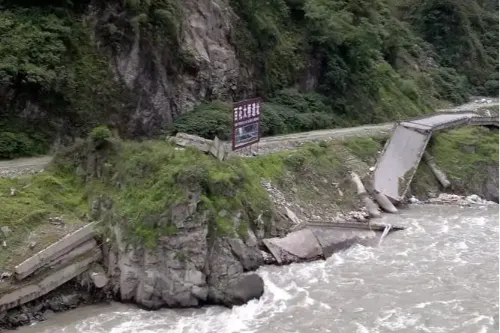

Yingxiuwan Park
Yingxiuwan Park was once the site of Yingxiu Primary School, which collapsed in the 5.12 Wenchuan earthquake. 260 compatriots died here. It is located on a fault zone, so permanent buildings are not suitable to be built. Later, it was built into Yingxiuwan Park integrating ecological sightseeing and tourist gathering.

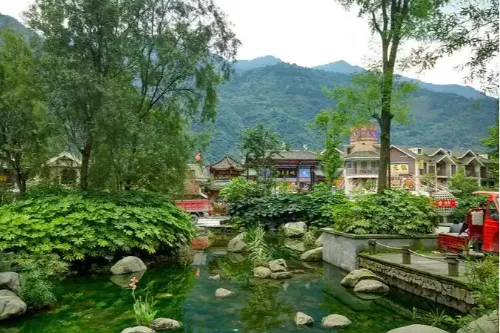
Chunfeng Pavilion
Chunfeng Pavilion is a landscape building built according to the historical culture of Shuimo Ancient Town and combining the architectural characteristics of Tibetan, Qiang and Han nationalities. The theme building adheres to the traditional Chinese architectural construction methods, and the detailed decorations have strong religious and Tibetan-Qiang cultural colors. It is an organic integration of multi-ethnic cultures, reflecting the tenacity and cohesion of all ethnic groups in the face of disasters. It is a strong witness of national unity and an excellent place for climbing and viewing the scenery.

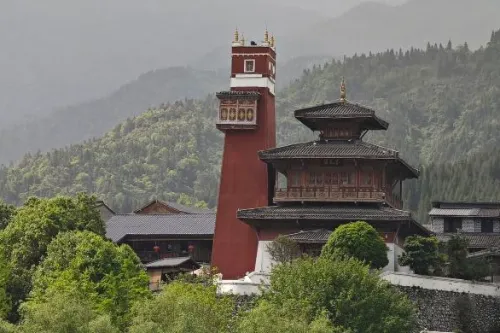
Xiqiang Hui
Xiqiang Hui is located at the foot of Chunfeng Pavilion in Shuimo Town, east of Shouxi Lake, and is one of the landmark landscapes of Shuimo. Its architectural plane evolved from a square, and the building facade combines the characteristics of Qiang blockhouses. It integrates modern architecture and decoration art with traditional Xiqiang culture, and incorporates Foshan ceramic art elements. It has multiple service functions such as exhibitions, performances, conferences and receptions. It shows the spiritual outlook of people who worked hard to rebuild their homes after the Wenchuan earthquake, implying the continuation of life and the inheritance of culture, and containing the deep friendship between Foshan and Shuimo connected by mountains and rivers.
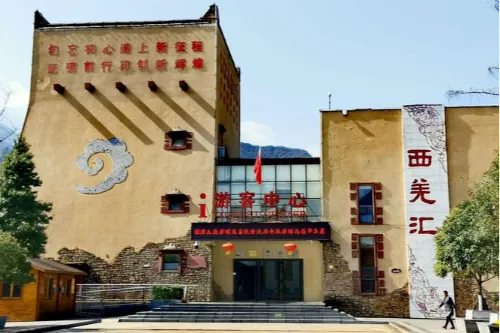
Shuimo Qiang City
Shuimo Qiang City covers a total area of 61,117 square meters. As a people's livelihood project reconstructed after the disaster, its building structure is designed to withstand magnitude 9 earthquakes. It comprehensively adopts various architectural styles of Qiang villages, including stone structures, mud structures, stone-wood structures and wood structures. While inheriting and carrying forward the Qiang architectural culture, it embodies the concept of a new Qiang city evolving from the simple and rugged traditional architectural clusters to a modern town.
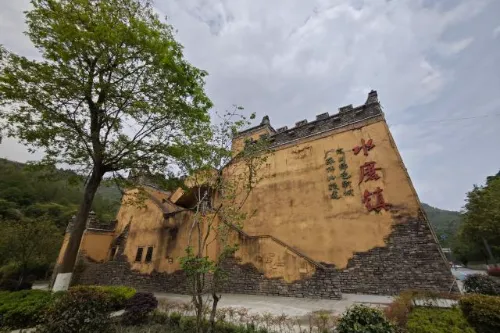

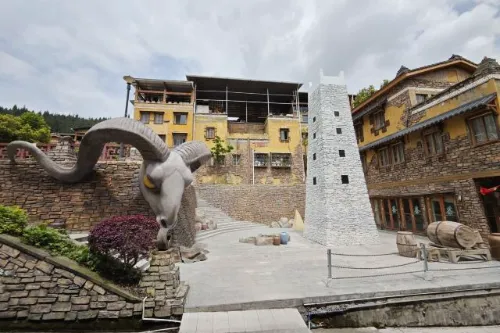
Tour Routes
It is recommended to spend at least 3 days for the tour. Day 1: Depart from Chengdu, drive for about 2 hours to reach the Yingxiu Earthquake Epicenter Ruins, and visit the Earthquake Memorial Wall, Earthquake Museum, Xuankou Middle School Ruins, etc. Day 2: Go to Shuimo Ancient Town, take a walk by the river, visit historical sites such as the Confucian Temple and Shouxing Bridge, taste special food, and in the afternoon, you can go to the surrounding tea gardens to experience tea picking or take a bamboo raft down the river. Day 3: Go to Sanjiang Ecological Scenic Area, hike through the primeval forest, climb high peaks to overlook the whole view, visit the waterfall group, or fish by the lake.
Tour Suggestions
- Learn about the opening hours and performance schedules of various attractions in the scenic area in advance to plan your trip reasonably.
- Some roads in the scenic area may be rough, so it is recommended to wear comfortable sports shoes.
- The climate in the mountainous area changes greatly, and the temperature difference between morning and evening is large. Even in summer, it is recommended to bring a coat.
- If you want to experience activities such as tea picking, you can prepare corresponding tools or clothing in advance.
- Respect local customs and religious beliefs.
Precautions
- Pay attention to weather changes, carry rain gear and warm clothes to prevent colds.
- Although Wenchuan has undergone post-disaster reconstruction, it is still necessary to be alert to aftershocks and landslides and other geological disasters, especially during the rainy season, be extra careful and avoid staying in dangerous areas.
- When doing outdoor activities, pay attention to sun protection and insect bites, and carry necessary first-aid medicines with you.
- Protect the environment, do not litter, and try to minimize damage to the natural environment.
- Abide by the regulations of the scenic area, do not touch cultural relics or damage public facilities at will.
Transportation
- By Air: You can fly to Chengdu Shuangliu International Airport, then take an airport bus to downtown Chengdu and transfer to a long-distance bus to Wenchuan; or directly take a taxi or use an online ride-hailing service to go to Wenchuan.
- By Train: Take a train to Chengdu Railway Station, then transfer to a long-distance bus to Wenchuan.
- By Long-distance Bus: All major bus stations in Chengdu have long-distance buses to Wenchuan. You can take a long-distance bus to Wenchuan at Chengdu Chadianzi Bus Station, with multiple departures every day, and the fare is about 100 yuan.
- By Self-driving: Starting from Chengdu, drive along the Chengdu-Wenchuan Expressway (Chengwen Expressway) directly to Wenchuan, passing through Dujiangyan, Yingxiu and other places on the way, and the journey takes about 3 - 4 hours.
- By Bus: Take Bus No. 1 in Wenchuan County to reach the earthquake site; take Bus No. 2 to reach Wenchuan Special Tourist Area.
- By Taxi: Taking a taxi from Wenchuan County to the earthquake site costs about 20 - 30 yuan; going to the Special Tourist Area costs about 30 - 40 yuan.
Opening Hours
Sanjiang Scenic Area is open from 08:00 to 18:00. The Epicenter Memorial Hall is open from 08:30 to 16:30 (closed every Monday). Shuimo Ancient Town is open all day. Please refer to the actual opening hours of the scenic area.
Tickets
The ancient town and the memorial hall are free of charge. The ticket for Sanjiang Scenic Area is 50 yuan per person. Please refer to the actual price of the scenic area.
Online Booking
Click here to jump to the Trip.com ticketing platform for ticket purchase.


